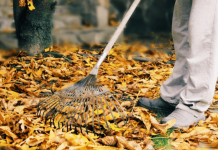Succulent plant identification
Morgan’s milk thistle (Sedum morganianum) is a striking representative of the succulent genus of the Thistle family. Its natural habitat is Mexico. It is a herbaceous perennial with foliated shoots, they reach a length of up to 1 meter. Dangling stems look very spectacular, so the culture is often called “donkey’s tail” or “monkey’s tail”, the name Butanus bouritto is also common.
Donkey Tail Succulent (lat. sedum morganianum ) is a popular, easy-growing succulent with fleshy, tattered leaves. Other closely related varieties of peeler may also be known by any of these names. These succulents make excellent hanging plants or can be used as trailers in small pots (plants with a single root along the surface).
Mature specimens can have branches up to two feet long and dozens of puffy gray-green leaves lined up like water droplets. In late fall, the flowers usually cluster in small bunches. The flowers can be red, yellow or white.

Donkey Tail Succulent
Tips for growing donkey’s tail succulents
This plant prefers a sunny location and is suitable for placement near a sunny window. In spring and summer, donkey’s tail should be watered weekly. Make sure the plant is well drained. Poor drainage will cause the roots to rot. In the winter, return to monthly watering. This succulent prefers an average temperature of 65F to 70F. It can tolerate winters as low as 40F, but prefers warmer climates.
Well-drained soil should have an ideal pH of about 6.0 (slightly acidic). As spring arrives, feed donkey tail with a balanced 20-20-20 controlled-release fertilizer containing equal amounts of nitrogen, phosphorus and potassium. Mature plants prefer fertilizers with a 1/4 concentration, while young plants may prefer fertilizers with low nitrogen.
Donkey tail is a forgiving plant. If you forget to water once or twice, it’s no big deal. All too often they are given a slack. But with a little effort, the plant can grow into a beautiful specimen.
Succulent pots

Propagation and Reporting
This plant can be propagated or propagated by seeds or cuttings. Individual leaves are placed in a succulent or succulent mixture and germinated until leaves emerge, covered with a glass or plastic lid or tin can. Plants with large donkey tails can also be divided if they are growing in modern pots.
Dividing is most successful during the warm season. To aerate succulents, make sure the soil is dry before starting the process. Carefully remove the plant from the current pot. Shake the old soil off the plant and remove any rotten or dead roots. If the roots have large wounds, treat them with fungicide. Place the plant in a new pot and fill the space with soil, replanting the roots in a larger pot in the new location. Allow the plant to dry out for a week or so, and then begin light watering to reduce the risk of root rot.
Basic rules of care:
- Watering. Only water when there is a prolonged and systematic drought. – Pruning. In a timely manner, shorten the shoots, remove branches that have wilted. This will allow the culture to maintain a beautiful form for a long time.
- Fertilization. In the spring and at the beginning of the season, it will be necessary to feed the plant with liquid organic or mineral substances. Complex fertilizer is diluted with poultry manure in a ratio of 1 to 20.
- Overwintering. As soon as the cold weather arrives, it will be necessary to remove the above-ground part of the culture, leaving only up to 4 centimeters of shoots above the ground. Cover the top with a small amount of soil.
Pests of Succulents
Insects and pests
Donkey tail is not particularly sensitive to insect pests of succulents. Aphids are the most common pest of this plant. To get rid of aphids, you can shake the plant with water every month. Another way is to spray the plant with a mixture of 1/5 medical alcohol and 4/5 water. If this doesn’t work, spraying organic neem oil directly on the plant will help get rid of the pests.
If we talk specifically about pests, they have almost no effect on the crop. Sometimes there are cases when plants suffer from them:
- False caterpillars. To combat them, it is recommended to use “Aktelik” or any other similar preparation. You can try a folk method – first bait the insects with cabbage leaves, and then destroy.
- Fungi. They appear in the form of dark spots on the stems or leaves. The only salvation will be to cut off the affected parts, burning them.

A more serious threat to succulents in the home is a variety of rots. Some of them can destroy the entire plant in just a few days. In most cases, the damage starts at the root system. If you notice spots, mold, watery, as if “boiled” leaves on the plant, it is urgent to cut off all damaged areas to healthy tissue. If the base of the plant is damaged, cut off the top of the stem and re-root it.









